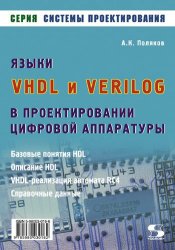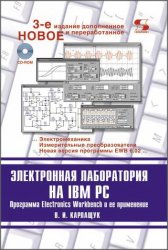- Добавил: umkaS
- Дата: 10-07-2023, 08:10
- Комментариев: 0
 Название: Интегральные микросхемы ТТЛ, ТТЛШ: Справочник
Название: Интегральные микросхемы ТТЛ, ТТЛШ: СправочникАвтор: Аванесян Г.Р., Левшин В.П.
Издательство: Машиностроение
Год: 1993
Cтраниц: 256
Формат: pdf
Размер: 13 мб
Язык: русский
Приведены данные по отечественным интегральным микросхемам, выполненым в базисе ТТЛ, ТТЛШ. Применение и назначение микросхем комментируется таблицами состояний, режимов и истинности, а также временными диаграммами. Электрические параметры микросхем сведены в сравнительные таблицы, содержащие характеристики микросхем одного функционального типа различных серий. Для инженерно-технических работников, занятых разработкой и эксплуатацией цифровой аппаратуры.









